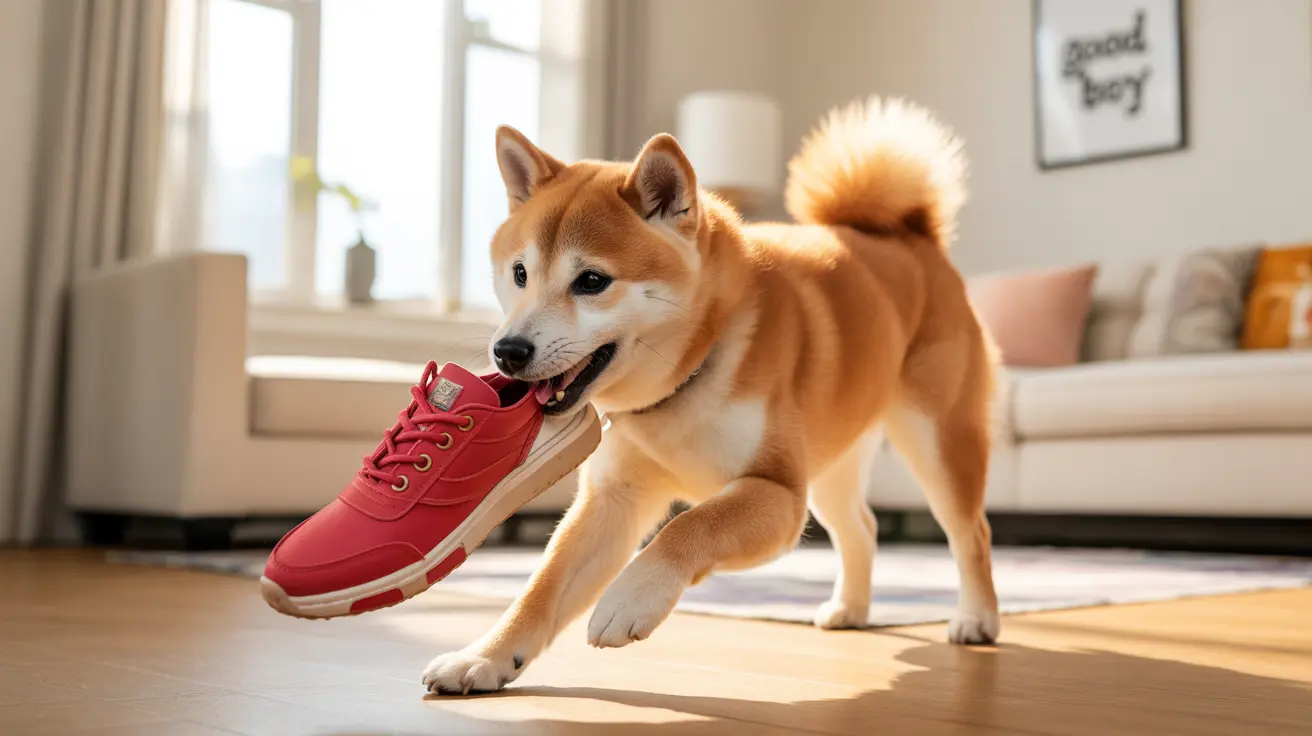The Psychology Behind Shoe Stealing
Dogs are naturally drawn to shoes for multiple compelling reasons. First, shoes carry a concentrated version of their owner's scent, making them particularly attractive to our canine companions. This scent connection creates a powerful attraction that goes beyond simple mischief.
Additionally, shoes often represent an easily accessible item that combines multiple attractive features: they're within reach, they move when pushed or carried, and they often have interesting textures that appeal to a dog's natural instincts to explore and play.
Attention-Seeking and Play Behavior
Many dogs learn that grabbing shoes is a foolproof way to get their owner's attention. When a dog steals a shoe and their owner reacts by chasing them or showing obvious concern, the behavior becomes reinforced as an effective way to initiate interaction.
This pattern often develops into a game from the dog's perspective, making the behavior self-rewarding and therefore more likely to be repeated. Even negative attention can reinforce this behavior, as any reaction is better than no attention at all in a dog's mind.
The Role of Scent and Comfort
Dogs' powerful sense of smell makes shoes particularly fascinating objects. A single shoe can tell them stories about where their owner has been, who they've met, and what they've done throughout the day. This "scent diary" creates an irresistible attraction for many dogs.
Some dogs, particularly those experiencing anxiety or seeking comfort, may steal shoes as a way to feel closer to their owners. The familiar scent provides a sense of security, especially when the owner is away from home.
Prevention and Training Solutions
Immediate Management Strategies
- Keep shoes in closed closets or elevated storage
- Provide appropriate chew toys and interactive puzzles
- Establish consistent exercise routines
- Create designated play areas with permitted toys
Long-term Training Approaches
Teaching the "leave it" and "drop it" commands is essential for managing shoe-stealing behavior. These commands should be practiced in controlled settings before applying them to real-life situations with shoes.
Positive reinforcement training, where dogs are rewarded for ignoring shoes and playing with appropriate toys, can help redirect their attention and establish better habits.
Environmental Management
Creating an environment that discourages shoe stealing while promoting appropriate behavior is crucial. This includes ensuring your dog has adequate physical exercise, mental stimulation, and positive attention throughout the day.
Consider using baby gates or closing doors to restrict access to shoe storage areas, especially when you can't directly supervise your dog. This management approach helps prevent the behavior while other training methods take effect.
Frequently Asked Questions
Why does my dog keep stealing and chewing on my shoes?
Dogs steal and chew shoes due to a combination of factors including attention-seeking behavior, scent attraction, boredom, and in some cases, anxiety or stress. The behavior often becomes self-rewarding, especially when owners react by chasing or showing concern.
How can I stop my dog from stealing shoes for attention or play?
Combine management strategies (keeping shoes out of reach) with positive reinforcement training. Teach alternative behaviors, provide appropriate toys, and ensure your dog gets adequate exercise and attention throughout the day.
Are certain dog breeds more prone to stealing shoes because of their energy levels?
Yes, high-energy breeds like Huskies, Shepherds, and Retrievers may be more likely to engage in shoe-stealing behavior, especially when they're under-exercised or lack mental stimulation.
Why are dogs attracted to the smell of human shoes, and how does it influence their behavior?
Dogs are attracted to shoes because they carry concentrated scents from their owners and various environments. This scent attraction can provide comfort and satisfy their natural curiosity about their environment and their human family members.
What are effective prevention and training methods to manage shoe stealing in dogs?
Effective methods include proper storage of shoes, consistent training with commands like "leave it" and "drop it," providing appropriate alternative toys, ensuring adequate exercise, and using positive reinforcement to reward desired behaviors.
Conclusion
While shoe stealing can be frustrating for dog owners, understanding the behavior's root causes helps develop effective management strategies. With consistency, proper training, and environmental management, you can help your dog develop better habits while maintaining a strong, positive relationship.






